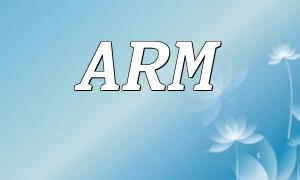PHP သည်ဝက်ဘ်ဖွံ့ဖြိုးတိုးတက်မှုတွင်ကျယ်ကျယ်ပြန့်ပြန့်အသုံးပြုသောဆာဗာ server server scripting language တစ်ခုဖြစ်သည်။ ၎င်းသည်ထိရောက်သောဖွံ့ဖြိုးမှုထိရောက်မှုနှင့် Cross-platform အားသာချက်များကိုထောက်ပံ့ပေးသည်။ 0 က်ဘ်ဆိုက်မဖွံ့ဖြိုးတိုးတက်မှုတွင် static pages များကိုထုတ်လုပ်ရန်နှင့်ကြိုတင်ကြည့်ရှုရန်လုပ်ဆောင်ချက်များကိုအကောင်အထည်ဖော်ရန်လိုအပ်သည်။ ဤဆောင်းပါးသည် PHP မှတစ်ဆင့်ဤလုပ်ဆောင်မှုနှစ်ခုကိုမည်သို့အကောင်အထည်ဖော်ရမည်ကိုမိတ်ဆက်ပေးလိမ့်မည်။
PHP တွင်ကျွန်ုပ်တို့သည် static pages များကိုဖိုင်တွဲထားခြင်းဖြင့်ပြုလုပ်နိုင်သည်။ ပထမ ဦး စွာကျွန်ုပ်တို့သည်စာမျက်နှာ၏အပြင်အဆင်နှင့်စတိုင်ပါသော template file တစ်ခုကိုဖန်တီးရန်လိုအပ်သည်။ template တစ်ခုတွင်အကြောင်းအရာကို dynamically ကိုထည့်သွင်းရန် variable တွေကိုသုံးပါ။ ဤတွင်ရိုးရှင်းသော template ဖိုင်ဥပမာတစ်ခုရှိသည်။
<html>
<head>
<title><? PHP Echo $ ခေါင်းစဉ်, ></title>
</head>
<body>
<h1><?php echo $title; ?></h1>
<p><?php echo $content; ?></p>
</body>
</html>
PHP scripts တွင်ကျွန်ုပ်တို့သည် template file ရှိ variable တန်ဖိုးများကိုအစားထိုးခြင်းဖြင့် static pages များကိုထုတ်လုပ်နိုင်သည်။ ဤတွင်ရိုးရှင်းသောအကောင်အထည်ဖော်မှုဥပမာတစ်ခုဖြစ်သည်။
<?php
// စာမျက်နှာခေါင်းစဉ်နှင့်အကြောင်းအရာကိုသတ်မှတ်ပါ
$title = "ငါ၏အ Blog မှကြိုဆိုပါသည်";
$content = "ဒါကငါ့ရဲ့ပထမဆုံးဘလော့ဂ်ပို့စ်ပါ";
// Template File Content ကိုဖတ်ပါ
$template = file_get_contents('template.html');
// တင်းပလိတ်များတွင် variable တွေကိုအစားထိုးပါ
$template = str_replace('$title', $title, $template);
$template = str_replace('$content', $content, $template);
// ငြိမ်ဝပ်သောစာမျက်နှာများကိုဖန်တီးပါ
file_put_contents('static.html', $template);
echo "static စာမျက်နှာမျိုးဆက်အောင်မြင်စွာ!";
?>
အထက်ဖော်ပြပါဥပမာတွင်စာမျက်နှာ၏ခေါင်းစဉ်နှင့်အကြောင်းအရာများကိုသတ်မှတ်ပြီး `file_get_contents () function မှတဆင့် template ဖိုင်၏ contents ကိုဖတ်ပါ။ ထို့နောက် `strust'replace ()` `` function ကိုသုံးပါ။ နောက်ဆုံးတွင် `file_put_controntents ()` function ကို `function ကိုသုံးပါ။
Preview function သည် static pages များကိုမထုတ်လုပ်မီစာမျက်နှာသက်ရောက်မှုများကိုကြည့်ရှုရန်ခွင့်ပြုသည်။ ၎င်းသည် developer များ debug များကို subug နှင့်ပြုပြင်ခြင်းကိုကူညီနိုင်သည်။ ဤတွင် Preview function ကိုအကောင်အထည်ဖော်သည့်နမူနာကုဒ်ဖြစ်သည်။
<?php
// စာမျက်နှာခေါင်းစဉ်နှင့်အကြောင်းအရာကိုသတ်မှတ်ပါ
$title = "ငါ၏အ Blog မှကြိုဆိုပါသည်";
$content = "ဒါကငါ့ရဲ့ပထမဆုံးဘလော့ဂ်ပို့စ်ပါ";
// Template File Content ကိုဖတ်ပါ
$template = file_get_contents('template.html');
// တင်းပလိတ်များတွင် variable တွေကိုအစားထိုးပါ
$template = str_replace('$title', $title, $template);
$template = str_replace('$content', $content, $template);
// output ကို preview စာမျက်နှာ
echo $template;
?>
ဤဥပမာတွင်စာမျက်နှာ၏ခေါင်းစဉ်နှင့်အကြောင်းအရာများကိုလည်းသတ်မှတ်ပြီး template file ၏ content ကိုဖတ်ပါ။ ထို့နောက် template ကို variable တွင် variable () `စာမျက်နှာကိုသုံးရန်နှင့် previewer ကို preview to preview to` echo` `` စာမျက်နှာမှအစားထိုးရန် `strow_replace () ကိုသုံးပါ။
PHP ကို အသုံးပြု. static pages များကိုနှင့် preview features များကို dynamically လုပ်ခြင်းဖြင့် developer များသည်ဝက်ဘ်စာမျက်နှာများကိုပိုမိုထိရောက်စွာဖန်တီးနိုင်ပြီး debug လုပ်နိုင်သည်။ ပြောင်းလဲနေသော static pages များ၏တက်ကြွသောမျိုးဆက်သစ်များကိုရရှိရန် variable များကိုအစားထိုးရန် template engine ကို အသုံးပြု. တစ်ချိန်တည်းမှာပင်စာမျက်နှာအကျိုးသက်ရောက်မှုသည်မျှော်လင့်ချက်နှင့်အညီမျှော်လင့်ချက်များနှင့်ကိုက်ညီမှုရှိကြောင်းသေချာစေသည်။ ဤနည်းလမ်းများသည်ဖွံ့ဖြိုးရေးထိရောက်မှုကိုများစွာတိုးတက်စေပြီးနေ့စဉ်ဘ 0 ဖွံ့ဖြိုးတိုးတက်မှုလိုအပ်ချက်များကိုဖြည့်ဆည်းပေးသည်။










